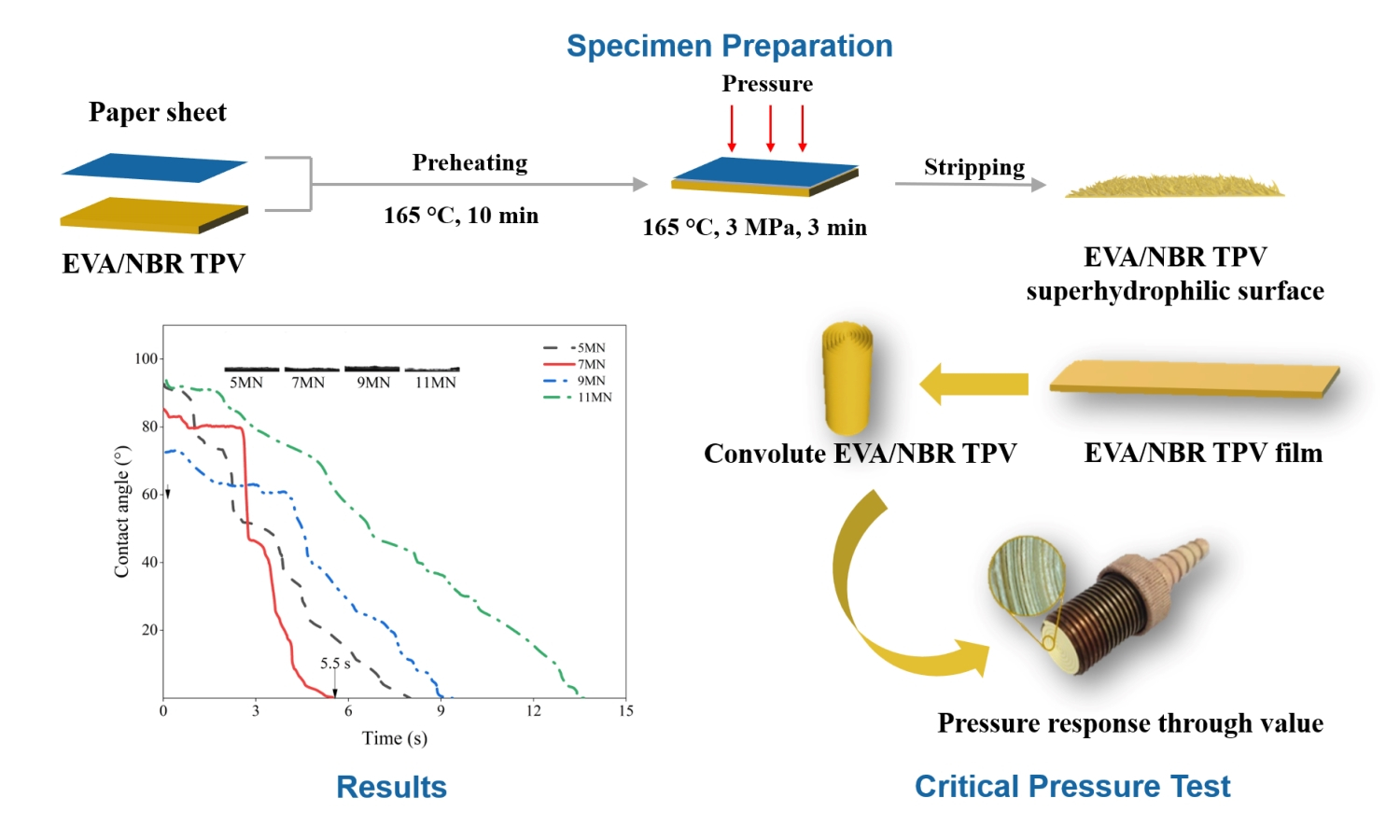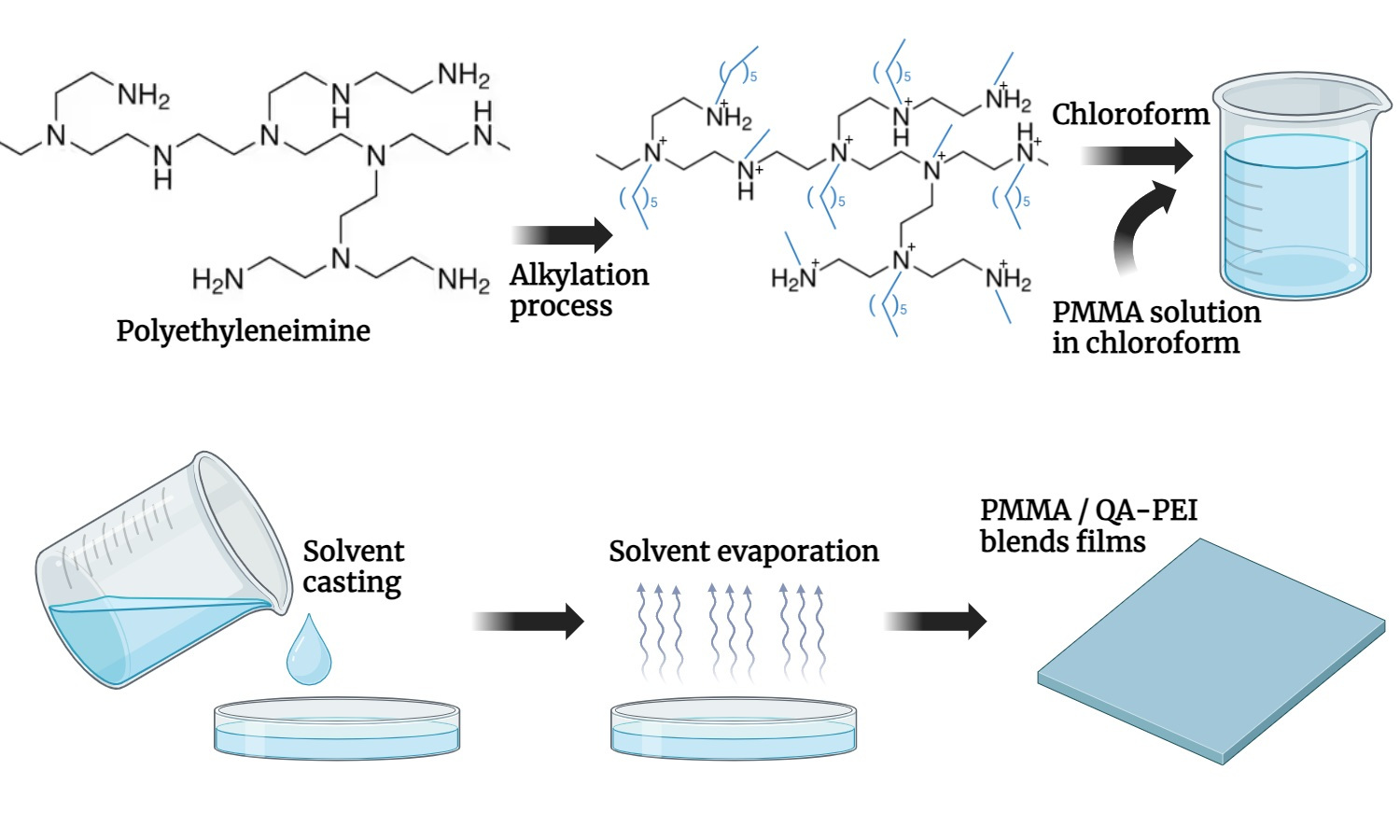Construction and applications of superhydrophilic surface based on ethylene-vinyl acetate copolymer/nitrile-butadiene rubber thermoplastic vulcanizate
Weiran Zhang, Yuan Gao, Ruotao Feng, Dazhi Zhu, Zhaobo Wang
Vol. 18., No.7., Pages 675-688, 2024
DOI: 10.3144/expresspolymlett.2024.50
DOI: 10.3144/expresspolymlett.2024.50
GRAPHICAL ABSTRACT

ABSTRACT
In this research, a straightforward template method was utilized to fabricate a superhydrophilic ethylene-vinyl acetate copolymer (EVA)/nitrile-butadiene rubber (NBR) thermoplastic vulcanizate (TPV) surface where the paper sheet was used as template. Organic modified montmorillonite (OMMT) powder was introduced in order to improve the superhydrophilic response rate of the TPV surface. Investigations were conducted to research the durability and the self-cleaning behavior of the TPV surface, as well as to explore its potential application in the separation of oil-water and oil-oil mixtures. Experimental results demonstrated that the EVA/NBR/OMMT TPV (mass ratio 20/80/7) surface molded with No. 1000 paper sheet exhibited the excellent superhydrophilic property, which could achieve a contact angle of 0.0° within 5.5 s and had a surface energy of 35.6 mN·m–1. The superhydrophilic surface displayed the remarkable durability and the evident self-cleaning behavior; moreover, it could exhibit the significant difference in the critical pressure data for various liquids, suggesting the promising application in the field of oil-water and oil-oil separation.
RELATED ARTICLES
Rafael Affonso Netto, Guilherme Ribeiro de Carvalho, Lucas Henrique Staffa, Liliane Maria Ferrareso Lona
Vol. 19., No.2., Pages 161-175, 2025
DOI: 10.3144/expresspolymlett.2025.12
Vol. 19., No.2., Pages 161-175, 2025
DOI: 10.3144/expresspolymlett.2025.12

This study aimed first to promote the alkylation of polyethyleneimine (PEI), developing its alkylated (quaternary) form (QA-PEI) by inserting alkyl groups into amine groups. Subsequently, polymer blends with poly(methyl methacrylate) (PMMA) were prepared via solvent casting, and finally, the physicochemical, optical, and mechanical behavior of the resulting PMMA/QA-PEI were assessed. Elemental analyses, Fourier-transform infrared spectroscopy (FT-IR), and hydrogen nuclear magnetic resonance spectroscopy (1H-NMR) confirmed that the PEI alkylation successfully converted the amine groups into quaternary ammonium groups. When added to PMMA, QA-PEI altered its coloration, making it yellow. In addition, higher contents of QA-PEI hindered PMMA transmittance and increased its opacity due to the larger QA-PEI domains. Scanning electron microscopy (SEM) images showed that PMMA and QA-PEI formed a phase-separated system, establishing a droplet-matrix morphology. The thermal and mechanical behavior showed some compatibility between PMMA and QA-PEI as thermal resistance slightly improved and PMMA glass transition temperature (Tg) decreased. The tensile strength was also improved in the PMMA/QA-PEI blends without significant change in strain at break and tensile modulus.



